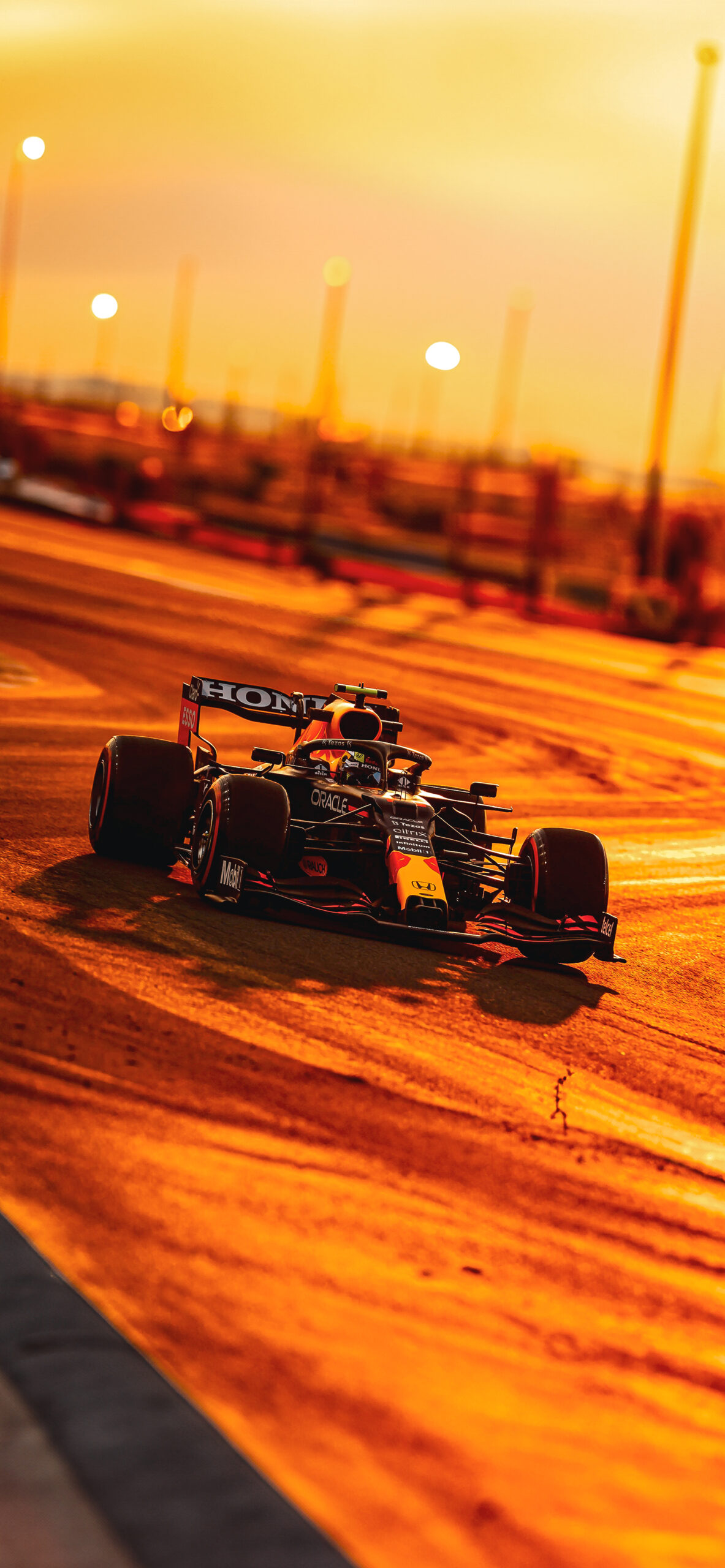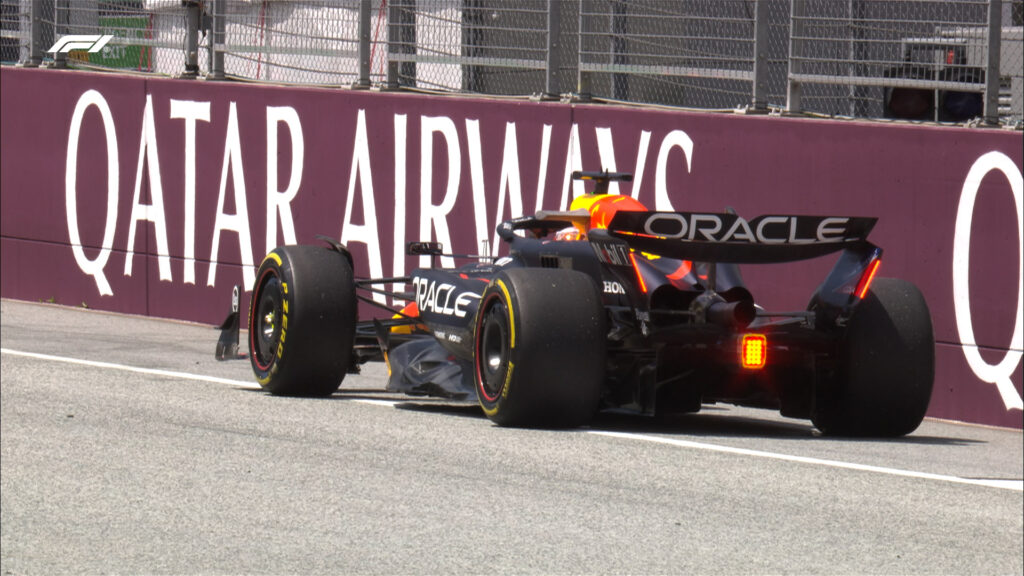
The picturesque hills of Styria are alive with the sound of Formula 1 engines as the world’s premier motorsport category descends upon the Red Bull Ring for the Austrian Grand Prix. This weekend promises to be particularly thrilling, with the sprint race format adding an extra layer of excitement and unpredictability to the proceedings. Let’s dive into the highlights from the practice session and preview what’s in store for this action-packed weekend.



Practice Session Highlights: Verstappen Sets the Pace
The sole practice session ahead of sprint qualifying provided a tantalizing glimpse of what we can expect from this weekend’s on-track action. With only 60 minutes to dial in their setups and gather crucial data, teams and drivers were under immense pressure to make every lap count.
Verstappen Dominates on Home Turf
Reigning world champion Max Verstappen wasted no time in asserting his dominance at Red Bull’s home circuit. The Dutch driver laid down an impressive marker, setting a blistering pace with a fastest lap time of 1:06.302 on the soft compound tires. This performance not only showcased Verstappen’s raw speed but also highlighted the potent combination of his talent and the Red Bull RB18’s capabilities on this track.
Verstappen’s pace is particularly noteworthy given the unique characteristics of the Red Bull Ring. The circuit’s mix of long straights and tight corners demands a well-balanced car, and it seems that Red Bull has hit the sweet spot with their setup. However, the session wasn’t without drama for the championship leader, as he brought out a red flag when his car stopped on track. While this momentary setback didn’t impact his overall performance, it serves as a reminder of the fine margins in Formula 1 and the potential for unexpected twists throughout the weekend.
Ferrari and Mercedes Show Strong Form
While Verstappen topped the timesheets, the competition isn’t far behind. Ferrari’s Charles Leclerc split the Red Bulls, finishing just 0.255 seconds behind Verstappen in second place. This performance from Leclerc is encouraging for the Scuderia, suggesting that they have the pace to challenge Red Bull this weekend.
Mercedes also appeared to have made significant gains, with George Russell taking third position, only 0.4 seconds off Verstappen’s pace. His teammate, seven-time world champion Lewis Hamilton, wasn’t far behind in fourth. This strong showing from Mercedes indicates that their recent upgrades may be starting to pay dividends, potentially setting the stage for a three-way battle at the front of the pack.
Midfield Surprises and Struggles
The practice session also provided some intriguing storylines further down the grid. Haas, in particular, enjoyed a promising start to the weekend. Kevin Magnussen impressed with the fifth-fastest time, while his teammate Mick Schumacher also featured in the top 10. This performance suggests that Haas could be dark horses for strong points finishes this weekend, particularly if they can maintain this form through qualifying and the sprint race.
On the other hand, it was a difficult session for McLaren. Lando Norris encountered issues that forced him to stop on track, bringing out a red flag. His teammate, Daniel Ricciardo, struggled to find pace and finished down in 17th position. This lackluster performance will be a concern for the Woking-based team, who will need to work overnight to unlock more speed from their car.
The Sprint Format: A Unique Challenge
This weekend’s Austrian Grand Prix features the sprint race format, which adds an extra layer of complexity and excitement to the traditional race weekend structure. Let’s break down what this means for the teams and drivers.
Understanding the Sprint Format
The sprint format, introduced in 2021, is designed to provide more competitive action across the race weekend. Here’s how it works:
- Friday: One practice session followed by qualifying for the sprint race
- Saturday: Sprint race (100km, approximately 30 minutes) followed by traditional qualifying for Sunday’s Grand Prix
- Sunday: Full-length Grand Prix
This format presents several unique challenges. Teams have significantly less practice time to optimize their setups, making every lap of Friday’s practice session crucial. The sprint race on Saturday not only determines the starting grid for Sunday’s Grand Prix but also offers points to the top eight finishers (8 points for first, down to 1 point for eighth).
Strategic Implications
The sprint format forces teams to approach the weekend differently from a strategic standpoint. With only one practice session before qualifying, teams must strike a delicate balance between gathering data for long runs and optimizing their cars for qualifying pace.
Moreover, the sprint race itself becomes a strategic battleground. Drivers must weigh the potential benefits of aggressive overtaking against the risk of damaging their cars or compromising their starting position for Sunday’s main event. Tire management also becomes crucial, as drivers need to ensure their tires remain in good condition for the full sprint distance.
Key Factors for the Austrian Grand Prix Weekend
As we look ahead to the rest of the weekend, several key factors are likely to shape the outcome of both the sprint race and the Grand Prix.
Red Bull’s Home Advantage
The Red Bull Ring, as the name suggests, is the home circuit for Red Bull Racing. This home advantage often translates into strong performances, as evidenced by Verstappen’s dominance in recent years. The Dutch driver has won three of the last four races held at this circuit, including both races in the double-header last year.
Red Bull’s intimate knowledge of the track, combined with the natural advantages of their high-rake car design on this circuit, makes them strong favorites. However, as we’ve seen throughout this season, Ferrari and an resurgent Mercedes are more than capable of challenging for victories.
The Importance of Qualifying
Given the relatively short lap time at the Red Bull Ring (just over a minute), qualifying becomes even more crucial. Small mistakes can result in significant drops in grid position, potentially compromising a driver’s entire weekend. The top teams will be aiming to lock out the front rows, as starting position can be particularly important given the track’s layout, which can make overtaking challenging despite the presence of DRS zones.
Weather Conditions
The weather in Styria can be unpredictable, with sudden rain showers not uncommon. As of now, the forecast suggests a possibility of rain for Saturday’s sprint race, which could throw a spanner in the works for many teams. Wet conditions would not only test the drivers’ skills but also put added pressure on strategists to make the right calls on tire choices and pit stops.
Tire Management
Tire management is always crucial in Formula 1, but it takes on added importance at the Red Bull Ring. The track’s layout, with its mix of high-speed straights and tight corners, can be particularly demanding on tires. The left-front tire, in particular, tends to take a beating due to the clockwise nature of the circuit and the presence of several right-hand corners.
In the sprint race, drivers will need to push hard while also ensuring their tires remain in good condition for the full distance. For Sunday’s Grand Prix, we can expect to see a variety of strategies, with some teams potentially attempting to make a one-stop strategy work, while others might opt for a more aggressive two-stop approach.
Team-by-Team Outlook
Let’s take a closer look at how each team is shaping up for the weekend based on their practice performance and recent form:
- Red Bull Racing
Red Bull comes into their home race as the clear favorites. Verstappen’s pace in practice was ominous for the competition, and the team has historically performed well at this circuit. Sergio Perez, despite being a bit off Verstappen’s pace in practice, has shown strong form this season and could be a factor in both the sprint and the Grand Prix. - Ferrari
The Scuderia looks to be Red Bull’s closest challengers this weekend. Charles Leclerc’s second-place finish in practice suggests that Ferrari has the pace to compete at the front. Carlos Sainz, who has been showing improved form in recent races, will be looking to build on his Canadian Grand Prix podium. - Mercedes
The Silver Arrows seem to have made progress with their recent upgrades. Both George Russell and Lewis Hamilton showed competitive pace in practice, suggesting that Mercedes could be in the mix for podium positions. If they can unlock more performance from their car, they could potentially challenge for victory. - Alpine
The French team has been one of the most consistent midfield performers this season. While they didn’t make headlines in practice, both Fernando Alonso and Esteban Ocon have the experience and skill to capitalize on any opportunities that arise during the sprint and the Grand Prix. - McLaren
After a difficult practice session, McLaren has work to do. Lando Norris’ stoppage and Daniel Ricciardo’s lack of pace are concerning, but the team has shown resilience and the ability to bounce back from setbacks earlier in the season. They’ll be hoping to find more speed overnight and challenge for points in both the sprint and the Grand Prix. - Alfa Romeo
Valtteri Bottas has been a consistent points scorer for Alfa Romeo this season, and the team will be looking to continue that trend in Austria. Rookie Zhou Guanyu has shown flashes of speed and will be aiming to score more points after his strong showing in Canada. - Haas
The American team’s strong performance in practice was one of the surprises of the day. If Kevin Magnussen and Mick Schumacher can maintain this form through qualifying and the races, Haas could be in for a very productive weekend. - AlphaTauri
After a strong 2021 season, AlphaTauri has struggled to find consistent form this year. Pierre Gasly and Yuki Tsunoda will be hoping that the team’s close ties with Red Bull might give them some advantages at this circuit. - Aston Martin
Sebastian Vettel and Lance Stroll have had a challenging season so far, but both drivers have previous success at this circuit. They’ll be looking to use their experience to maximize their chances of scoring points. - Williams
Williams continues to struggle at the back of the grid, but the sprint format could present opportunities for Alex Albon and Nicholas Latifi to make up positions if they can capitalize on any chaos or mixed weather conditions.
Ones to Watch
As we head into the crucial qualifying session for the sprint race, here are a few drivers to keep a close eye on:
- Max Verstappen
The reigning world champion and current points leader is undoubtedly the man to beat this weekend. His pace in practice, combined with his stellar record at this circuit, makes him the clear favorite. - Charles Leclerc
After a string of disappointing results, Leclerc will be eager to reassert himself in the championship fight. His second-place finish in practice suggests he has the pace to challenge Verstappen. - Lewis Hamilton
The seven-time world champion has yet to win a race this season, his longest winless streak since joining Mercedes. With the team showing improved form, could this be the weekend Hamilton returns to the top step of the podium? - George Russell
Russell has been incredibly consistent this season, finishing in the top five in every race he’s completed. His strong practice performance suggests he could be in for another good result this weekend. - Kevin Magnussen
After his surprise fifth place in practice, all eyes will be on Magnussen to see if he can convert this pace into a strong qualifying performance and potentially a points finish in the sprint race.
The Red Bull Ring: A Driver’s Perspective
To truly appreciate the challenge that awaits the drivers this weekend, let’s take a lap around the Red Bull Ring from a driver’s perspective:
As you cross the start/finish line, you’re immediately faced with a steep uphill climb into Turn 1, a tight right-hander that requires heavy braking and a precise turn-in point. Get it wrong here, and you’ll compromise your entire lap.
Exiting Turn 1, you’re quickly into the left-hand Turn 2, which is taken flat out in modern F1 cars. This leads you onto a short straight before the challenging Turn 3, a long right-hander that tests both driver skill and tire management.
The exit of Turn 3 is crucial, as it leads onto the longest straight on the circuit. This is the first DRS zone and a prime overtaking opportunity. At the end of this straight, you brake hard for Turn 4, another tight right-hander that’s easy to outbrake yourself into.
Turns 5 and 6 form a quick left-right chicane that tests a car’s balance and a driver’s precision. Exit speed is critical here, as it leads onto another long straight and the second DRS zone.
This straight takes you down to Turn 7, a medium-speed right-hander that’s trickier than it looks. The final two corners, Turns 8 and 9, form a double-right complex that’s crucial for a good lap time. Exit speed out of Turn 9 is vital, as it determines your speed down the start/finish straight and into your next lap.
The Importance of the Sprint Race
The sprint race on Saturday adds an extra dimension to the race weekend. Not only does it offer additional points (8 for the winner, down to 1 for 8th place), but it also determines the starting grid for Sunday’s Grand Prix.
This format puts additional pressure on the drivers and teams. A poor performance in Friday’s qualifying could compromise the entire weekend, while a strong showing in the sprint race could set a driver up for success in the Grand Prix.
The sprint race also offers a unique strategic challenge. Drivers must balance the need for aggression to gain positions with the importance of preserving their car and tires for Sunday’s race. It’s a delicate balancing act that could lead to some thrilling on-track action.
Fan Experience at the Red Bull Ring
For fans attending the race, the Red Bull Ring offers a fantastic experience. The circuit’s location in the Styrian mountains provides breathtaking views, while its compact layout means spectators can see a large portion of the track from many vantage points.
The Austrian Grand Prix is also known for its festive atmosphere. The nearby campsite is legendary among F1 fans, with a party-like atmosphere throughout the weekend. The race often attracts a large contingent of Dutch fans supporting Max Verstappen, adding to the electric atmosphere.
This year, with COVID-19 restrictions largely lifted, we can expect the grandstands to be packed and the atmosphere to be at its vibrant best. The return of fans in full force will undoubtedly add to the spectacle and excitement of the weekend.
Historical Context
The Austrian Grand Prix has a rich history in Formula 1, dating back to 1964 when it was first held at the Zeltweg Airfield. The race moved to the Österreichring in 1970, which later became the A1-Ring in 1997 after extensive renovations.
After a hiatus from 2004 to 2013, the circuit was purchased by Red Bull magnate Dietrich Mateschitz, renovated once again, and returned to the F1 calendar in 2014 as the Red Bull Ring.
Over the years, the Austrian Grand Prix has provided many memorable moments. Who can forget Niki Lauda’s emotional home victory in 1984, or Michael Schumacher’s controversial win in 2002 when teammate Rubens Barrichello was ordered to let him pass on the final lap?
In recent years, the race has been dominated by Mercedes and Red Bull. Nico Rosberg and Lewis Hamilton won for Mercedes from 2014 to 2017, while Max Verstappen has won three of the last four races held here.
Looking Ahead: Championship Implications
As we approach the halfway point of the 2022 season, every point becomes crucial in the championship battle. Currently, Max Verstappen leads the Drivers’ Championship, with Red Bull also ahead in the Constructors’ standings. However, Ferrari and Charles Leclerc are not far behind, and Mercedes seems to be finding form at a crucial time.
A strong performance in both the sprint race and the Grand Prix could significantly impact the championship picture. Verstappen will be eager to extend his lead on home turf, while Leclerc and Ferrari will be desperate to close the gap. Meanwhile, Mercedes will be hoping that their improved form translates into a genuine challenge for victory.
For the midfield teams, the sprint format offers an additional opportunity to score points. A good result in the sprint race could make a significant difference in the tight battle for positions in the Constructors’ Championship.
Conclusion
As we head into qualifying for the sprint race, the stage is set for an enthralling weekend of Formula 1 action. The combination of the challenging Red Bull Ring circuit, the unpredictable sprint format, and the potential for changeable weather conditions means that anything could happen.
Will Max Verstappen continue his dominance on home soil? Can Ferrari and Charles Leclerc strike back in the championship fight? Will Mercedes’ resurgence continue, allowing Hamilton or Russell to challenge for victory? Or will we see a surprise from the midfield, with teams like Haas capitalizing on their strong practice form?
One thing is certain: the Austrian Grand Prix promises to be a highlight of the 2








